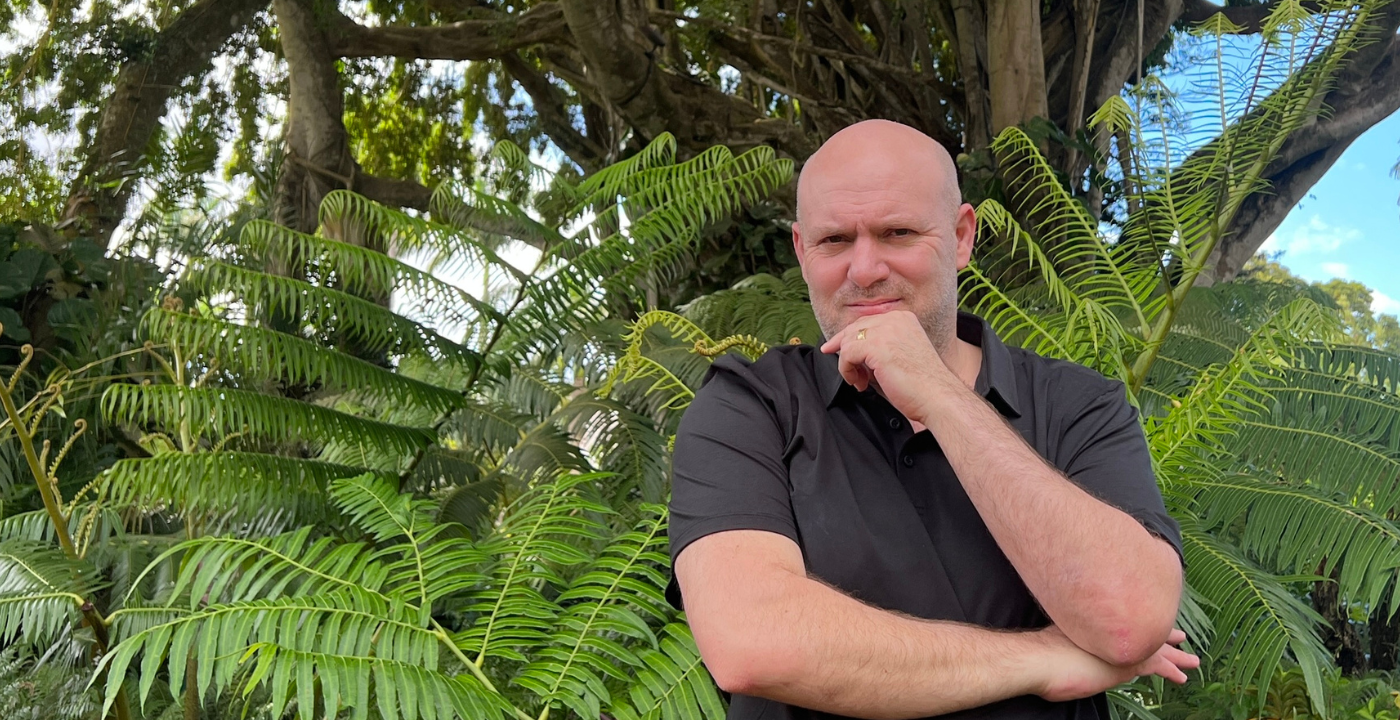Now let’s talk a little about the whole Mogok area. I grew up in Thailand from the age of 13. I used to sneak across the border, going
into Mogok at the age of 15 years old. It was illegal to go into Burma at that period. I mean, literally I would not be alive today if I was caught. But I was young, I was stupid, and I was interested. I wanted to know where these stones came from. So I used to go under the radar, sneak into the Shan state, and travel down village to village in the Mogok Stone Tract. I used to sit there, and basically learn from the villagers and trade stones with them. And then I used to sneak across back into the Thai border. I would disappear for 3, 4, 5 weeks at a time. People thought I was dead. But it was what basically inspired me to become the gem hunter of who I am today, because after going into Mogok, the world was simple for me. When Africa opened up, it was less dangerous. When
other countries opened up — I remember going through Sri Lanka, when they had the Tamil Rebels, et cetera — I wasn’t even fazed because Burma set the bar so high, and was so dangerous, that it was basically my education into the world of madness. Gem-hunting with no fear. That’s where it all began.
But in that process, I got to learn how these particular pigeon’s blood red rubies grow within the marble host rock. The highest fluorescence within the crystal structure — that differentiates them from what was the dominant ruby at the time. At the time — if you look back around 30-odd years ago — the prominent and dominant ruby in the marketplace was the Siam ruby, the Siamese ruby, or the Thai ruby that was predominantly mined in Bo Phloi or Nawong. These are the particular locations of mines within Thailand. It was what basically put Chanthaburi, Thailand on the map. Because the mines were mined within the Chanthaburi region. There was also a spillover of
Cambodian ruby that used to basically come into the Thai market as well, also known as Thai ruby, but the Siamese ruby — that particular area dominated the ruby market. So if you were buying rubies in New York or London, they were most likely, at that period in the 80s and 90s, predominantly Siamese rubies.
Then these particular pockets dried up. The Burma ruby has always been a very limited mined ruby, and back in the day — it’s had a lot of political turmoil, and ups and downs and changes of governments, et cetera — so it’s always been tricky, the Burma ruby, access has always been limited, and it’s never been a large quantity of Burmese rubies being mined. Thai ruby, on the other hand, was the first time they brought in serious mechanized mining. The Thais brought in the machines, they mined out everything they could, and the mines depleted. And that is why today, in the current market, there is zero Siam ruby traded at all. There is none out there. There is none in circulation. There is no mining. There is nothing. Nothing. If you’re looking for a 3.00 or 4.00 carat Thai Siam, Siamese ruby, it is impossible to find, because there is nothing — unless it is on someone’s finger, or in a piece of jewelry somewhere,
or in someone’s safe. So, Siamese rubies: a thing of the past.
Then, after the Siamese ruby basically depleted, Africa was the big thing. I remember being in Africa in early 2000 — late 1990s to early 2000 — and then we started finding rubies in Tanzania. That was a big thing. Tanzania — the first discovery was down in the Songea Region — now they produce predominantly color chain sapphire in Songea, but there were some red rubies that came out of the Songea region. But they tended to be very similar to the Siamese counterparts in the Thai area; they tended to have a more purple hue to them. They didn’t have the vivid red, like the material that comes out of Mogok, Burma. But that particular material had sparkle. It had sparkle. If you like sparkle, Tanzanian ruby popped. Songea was electric. It would pop, it would sparkle — the brilliance was unbelievable. And today, 99% — not even 99, I would say 100% — of all Songia ruby has been heated with beryllium. This is an additive they add while the heating process is going on. It’s a
controversial discussion. Kat Florence doesn’t deal with any beryllium stones. But beryllium is added within the crucible when they’re heating the ruby at 1800 degrees, and it makes that stuff pop! You want to see a gem turn purple to neon red — add beryllium to it. Very controversial, some people accept it, some don’t, but that’s a whole different discussion point. I sell a lot of rough that comes out of Tanzania, to people who heat this within Thailand, and then sell it onto different markets in Turkey, the US. A lot of people use it, because there is no sparkle like it.
Then the discovery of Winza. Winza was actually quite remarkable. The Winza deposit in Tanzania was very similar to material you saw out of Burma, but not as crystallized as the Burmese material. It was very rare. Now, don’t get me wrong — every ruby mine has amazing quality. Every single one will have the finest quality ruby. It’s just the percentage of how much of it actually is present within that deposit. So Winza: very short-lived, not a lot of rubies coming out of the deposit, but it was nice to see that red coming into the marketplace, to try to make up for the shortfall of the Burmese
ruby.
Now Burmese ruby: while this is happening in early 2000, it is exponentially increasing in price. You can see the auctions going for $200,000 a carat go up to $250,000 a carat, $300,000 a carat, $350,000, $400,000. You would think, with all the problems in Burma, and all the different restrictions — can’t import to the US, the trade embargoes — that the prices wouldn’t increase, but they kept going up. The Chinese used it as portable wealth. They were in the market, they were buying, it was crazy days. Here we go. This is where it all started changing.
Mid-2004 to 2005, I find myself in Mozambique, predominantly going after the Paraiba deposit. I was buying up everything I could. Mozambique Paraiba was world-changing. Nobody had ever seen it, nobody ever knew it, and I was there, filling up my pickup truck with it. I was buying everything I could. I went up to the Montepuez area of Mozambique, and what did I discover? I discovered ruby. Now this is before Gemfields was there. I was in Montepuez, in the northern part of Mozambique, plucking out these rubies. Now this material was different. This material had the pigeon’s blood red color. No
orange overtone, like we saw in Winza; no purplish overtone like we saw in Songea; no Siamese purple color as a secondary — this stuff was red. It was raining red. Raining red. Hallelujah, just raining red. And I stayed there for a year and a half, and worked with the locals, and bought as much of this Montepuez ruby as I could get to sell it into the market in Thailand, and voilà: Montepuez ruby — Mozambique ruby — was on the map.


